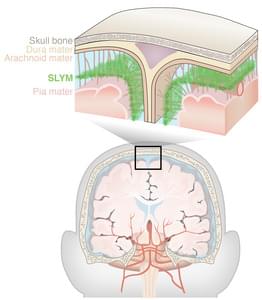A quantum camera can take images using light that has never actually illuminated the subject. It could be useful for imaging particularly fragile tissues and materials.



This post is also available in:  עברית (Hebrew)
עברית (Hebrew)
Hackers constantly improve at penetrating cyber defenses to steal valuable documents. So some researchers propose using an artificial-intelligence algorithm to hopelessly confuse them, once they break-in, by hiding the real deal amid a mountain of convincing fakes. The algorithm, called Word Embedding–based Fake Online Repository Generation Engine (WE-FORGE), generates decoys of patents under development. But someday it could “create a lot of fake versions of every document that a company feels it needs to guard,” says its developer, Dartmouth College cybersecurity researcher V. S. Subrahmanian.
If hackers were after, say, the formula for a new drug, they would have to find the relevant needle in a haystack of fakes. This could mean checking each formula in detail—and perhaps investing in a few dead-end recipes. “The name of the game here is, ‘Make it harder,’” Subrahmanian explains. “‘Inflict pain on those stealing from you.’”

From the complexity of neural networks to basic biological functions and structures, the human brain only reluctantly reveals its secrets. Advances in neuro-imaging and molecular biology have only recently enabled scientists to study the living brain at level of detail not previously achievable, unlocking many of its mysteries. The latest discovery, described today in the journal Science, is a previously unknown component of brain anatomy that acts as both a protective barrier and platform from which immune cells monitor the brain for infection and inflammation.
The new study comes from the labs of Maiken Nedergaard, co-director of the Center for Translational Neuromedicine at University of Rochester and the University of Copenhagen and Kjeld Møllgård, M.D., a professor of neuroanatomy at the University of Copenhagen. Nedergaard and her colleagues have transformed our understanding of the fundamental mechanics of the human brain and made significant findings to the field of neuroscience, including detailing the many critical functions of previously overlooked cells in the brain called glia and the brain’s unique process of waste removal, which the lab named the glymphatic system.
“The discovery of a new anatomic structure that segregates and helps control the flow of cerebrospinal fluid (CSF) in and around the brain now provides us much greater appreciation of the sophisticated role that CSF plays not only in transporting and removing waste from the brain, but also in supporting its immune defenses,” said Nedergaard.

The neocortex is the largest and most complex part of the brain and has long been recognized as the ultimate storage site for memories. But how are traces of past events and experiences laid down there? Scientists at the Max Planck Institute for Brain Research and the University of Freiburg Medical School have discovered that a little understood brain area, the zona incerta, has an unconventional way of communicating with the neocortex to rapidly control memory formation.
Memory is one of the most fundamental and fascinating functions of the brain, allowing us to learn from experience and remember our past. It is therefore a central element of our individual and collective human identity. Moreover, a mechanistic understanding of memory has implications reaching from treatment of memory and anxiety disorders, to artificial intelligence and efficient hard-and software design, and is therefore not only of great interest, but also of great importance.
In order to form memories, the brain needs to build associations between sensory signals that come “bottom-up” (or outside-in) from the environment, and internally-generated “top-down” signals that convey information about past experiences and current aims. These top-down (or inside-out) signals continue to be enigmatic and are therefore a major focus of current research.
Ex-Google engineer Blake Lemoine discusses sentient AI
https://www.techtarget.com/searchenterpriseai/feature/Ex-Goo…entient-AI
Interview with LaMDA
#gpt3 #lamda #ai #artificialintelligence #google #alphabet #sentient
GPT-3 reveals why it thinks AI will eventually take over the world…
✔️ More GPT-3 Interviews: https://www.youtube.com/playlist?list=PLy-h3fhzw40tfAsCMBXBduszV3ZZnZKqu.
Disclaimer: We spoke to GPT-3 using Emerson by QuickChat.ai then visualized the responses with Synthesia.io and are not associated with these companies in any way. All responses from the AI are genuine and are only edited for grammar and/or processing errors.
#gpt3 #artificialintelligence #takeover


Investigators at Cedars-Sinai have created a unique and detailed molecular profile of endometriosis to help improve therapeutic options for the millions of women suffering from the disease.
The study is published today in the journal Nature Genetics.
“Endometriosis has been an understudied disease in part because of limited cellular data that has hindered the development of effective treatments. In this study we applied a new technology called single-cell genomics, which allowed us to profile the many different cell types contributing to the disease,” said Kate Lawrenson, Ph.D., an associate professor in the Department of Obstetrics and Gynecology at Cedars-Sinai, and co-senior and corresponding author of the study.


Researchers have used fruit flies to decipher an unexplained connection between Alzheimer’s disease and a genetic variation, revealing that it causes neurons to die.
The findings from the Walter and Eliza Hall Institute (WEHI)-led team uncover a possible cause of neurodegeneration in the early stages of Alzheimer’s disease and open the door for the future development of new treatments for cognitive diseases.
The study, “An increase in mitochondrial TOM activates apoptosis to drive retinal neurodegeneration,” with collaborators from Australian National University, is published in Scientific Reports.